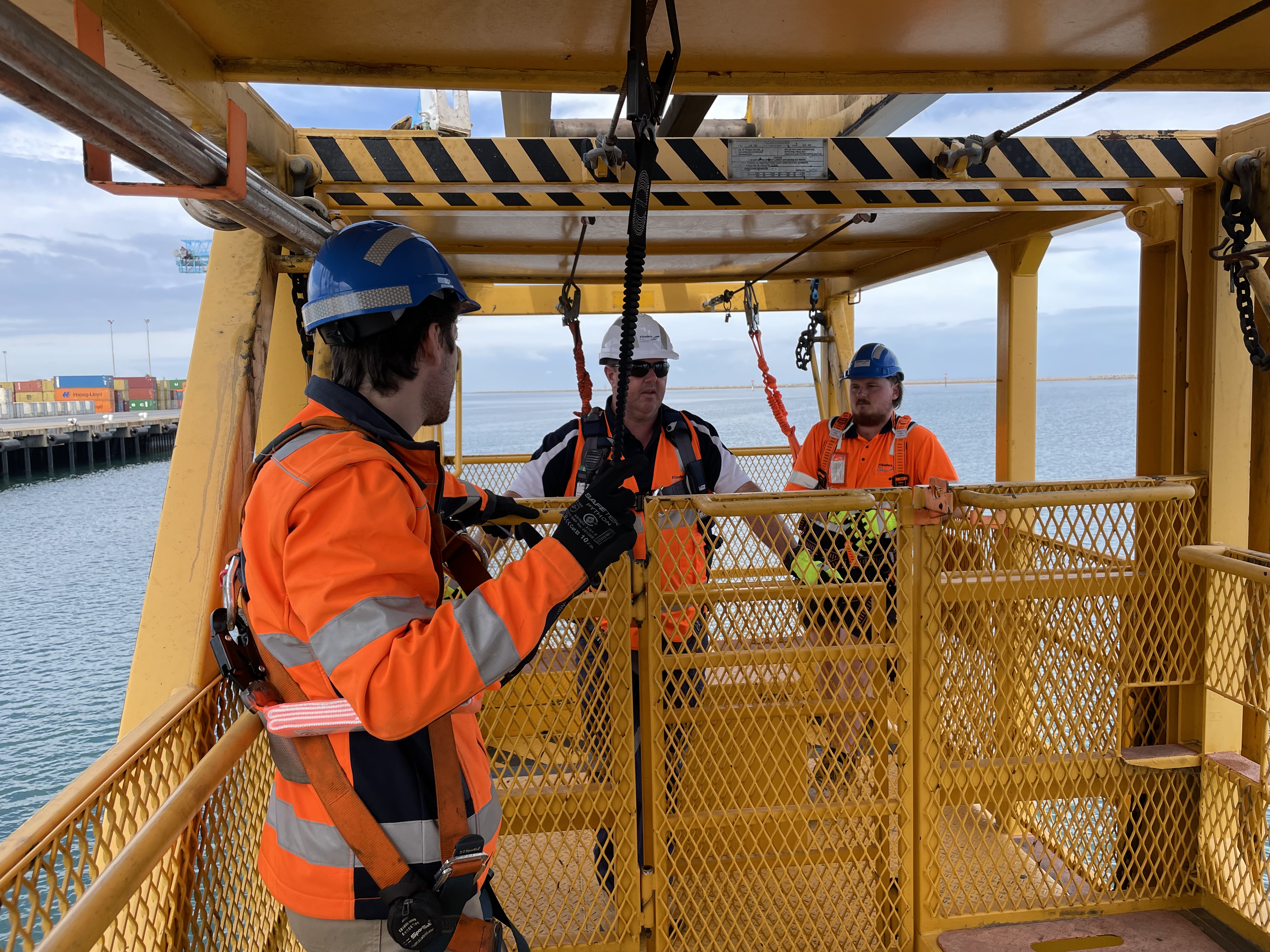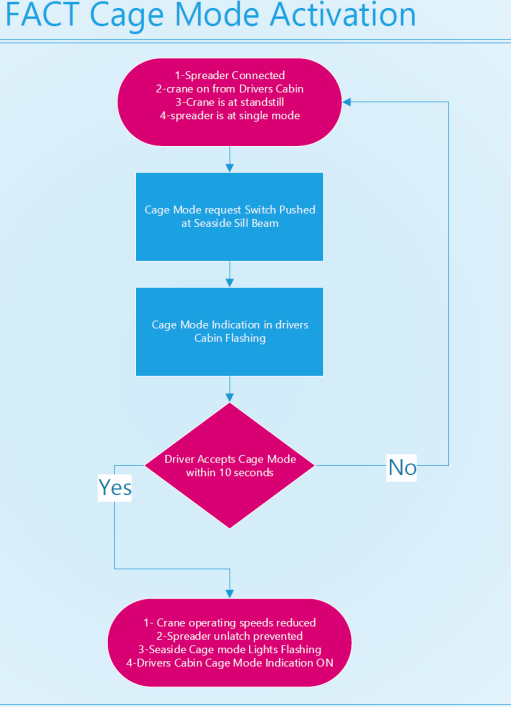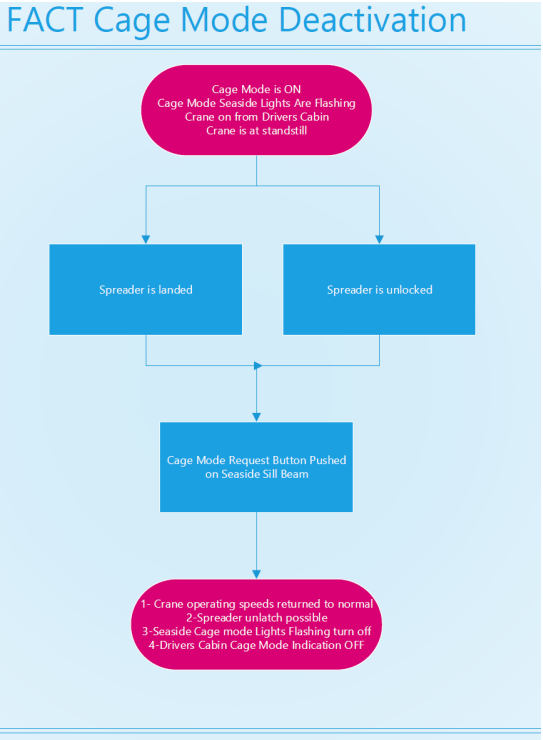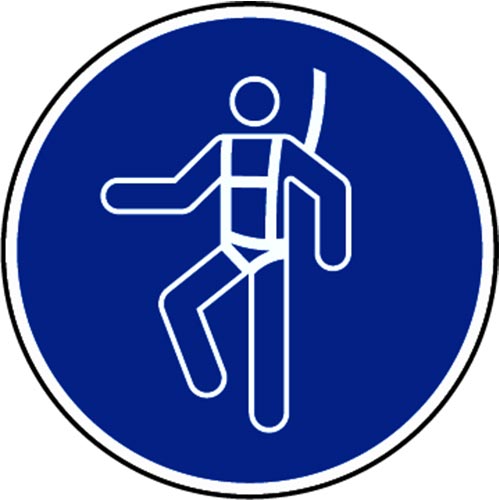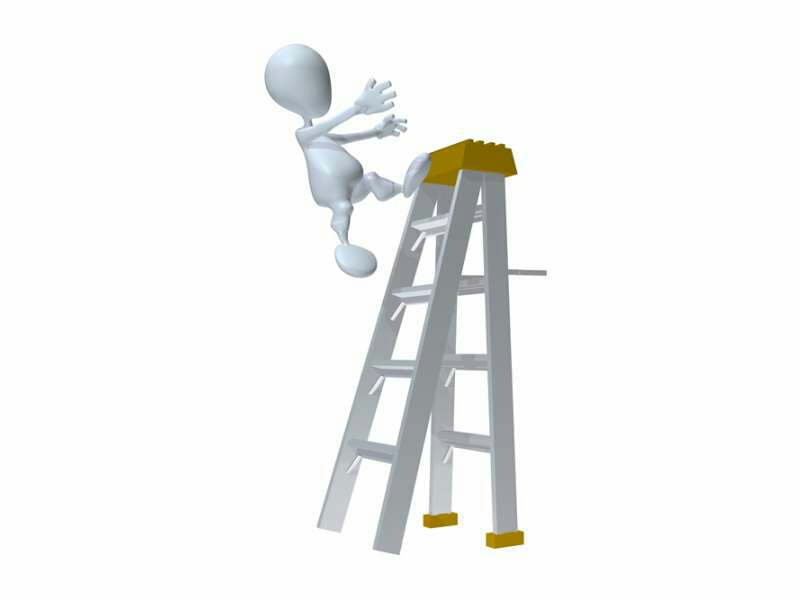Title Page
-
Candidate
-
High Risk Work Licence
-
Prepared by
-
Conducted on
-
Site conducted
-
Plant make, model and capacity
-
Working at Heights Procedures
-
Confirmation of site specific Working at Heights Procedure understanding
Task 1. Personal Harness.
-
How often should a full body harness be inspected? Select, as many options as you feel are correct from the following:
- Visually inspected before each use.
- Biannually inspected by a competent person.
- This task is performed by others.
- Only if it is too dirty.
-
On a Full Body Harness, which of the following would you check before use? Select, as many options as you feel are correct from the following:
- Untwist the harness, check and release all buckles.
- The harness complies with the current Standards and Regulations
- Check for excessive wear in any part, corrosion and chemical contamination, tactile and visual inspection.
- All of the above
-
Which of the following statements is correct?
- The lanyard must always run directly from the anchor point to the harness with no obstructions or deviations.
- The connector on the shock absorber end of the tape is connected to the full body harness.
- The connector on the shock absorber end of the tape is connected to a reliable anchor point.
- Always work above your attachment point to the anchorage/ structure.
Task 2 . Self Retracted Lanyards
-
You should use the Self-Retracting Lanyard only in conjunction with a ?
- Linesman Belt.
- Recreational Climbing Harness.
- AS/NZS or CE approved Full Body Harness and connecter.
- Pole strap.
-
On a Self-Retracting Lanyard, which of the following would you check on the start of a shift? Select, as many options as you feel are correct from the following:
- The stitched connection to the retracting body and to the self-locking connecter for damage, cuts, abrasion, faulty stitching etc.
- The energy-absorbing component has not been disturbed and is still correctly packed within the sleeve
- Test the locking action of the retractor by sharply jerking on the lanyard.
- The tape is retracted evenly and without twists in to the casing.
- Test all connectors for correct function of self-locking gates
-
In the event of an emergency what type of lanyard would you require if you needed to evacuate from the Straddle Carrier and Crane?
Task 3. Vessel Safety
-
Employees working on vessels on behalf of Flinders ACT shall use fall protection methods when they are: “Working within [ 2 ] metres of an unprotected edge wider than [ 2 ] which exposes them to a fall of [ 2 ] metres or more.” And; Required to work on or near fragile surfaces, where they may [Fall] through the structure.”
- Safe
- At Risk
- N/A
-
Which of the following hazard control measures are necessary to ensure the work area on a vessel is safe where there is a risk of a fall.
- Outboard cells have safety rails that are fit for purpose and in good condition and will prevent a person from fall
- Lashing platforms have safety rails that prevent a person falling 2m onto deck.
- Provision of railings, top and mid-rail, at both ends of open cargo holds.
- Rails (wire or chains) are taut and in good condition and extend the length of the open hatch.
- All the above.
-
Is lashing permitted in bays adjacent to an open hatch where there are no safety rails fitted?
-
Why is important to inspect the bay you are working and what must be completed before commencing Lashing or unlashing?
Task 4 : Work Cage
-
Explain the requirements at your workplace for lifting personnel using a crane.
- Approved cage.
- Crane Manufacture requirements must be satisfied.
- Company policies & procedures must be followed.
- Must have a person holding a current HRWL in dogging present in the cage directing the crane operator.
- All of the above.
-
Before transportation in the work cage what must be activated to ensure maximum safety of personnel?
-
What is the Cage Mode Activation procedure to ensure maximum safety of personnel when working within in the cage?
-
Once the work cage task has been completed and the work cage landed what is the procedure?
-
Is it permissible to disconnect lanyard from anchor point in work cage when suspended from crane?
Performance Assessment Checklist :
-
Uses full body harness
- Makes a visual and tactile inspection
- Checks fitting
- Performs buddy check (If Applicable)
-
Uses a self-retracting lanyard
- Makes a visual and tactile inspection
- Attaches lanyard correctly
- Detaches lanyard correctly
-
Uses a Karabiner
- Makes a visual and tactile inspection
- Opens Karabiner
- Attaches Karabiner
-
Double Lanyard
- Makes a visual and tactile inspection
- Attaches double lanyard to full body harness
- Transfers safely on line between intermediate anchor points
Working from the Cage :
-
Activates cage mode and communicates with Crane Operator to ensure activation
-
Inspects work cage for any loose items that could cause harm
-
Fits Harness and Lanyard and correctly attaches to anchor
-
Connects the Cage Safety Wires to Crane Spreader
-
Communicates with Crane operator and gives all clear signal
-
Safely carries out cage work as required maintaining comms.
-
Completes task and instructs Crane Operator to be landed
-
Removes Cage Safety Wires and stores Harness correctly
-
Exits the cage and deactivates cage mode, communicates with Crane Operator and gives the all clear signal
